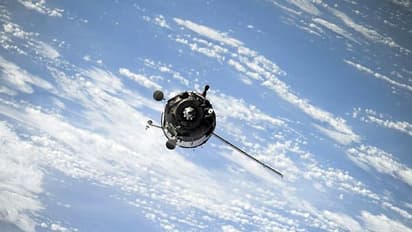IS4OM, India's way of protecting space assets from threats

Synopsis
ISRO officials say that the IS4OM will augment the country's self-reliance in protecting its own space assets. The Space Surveillance and Tracking control centre with consoles, software and displays will be inaugurated on Monday.
India will on Monday inaugurate the ISRO System for Safe and Sustainable Space Operation and Management or IS4OM, which is intended to ensure the safety and sustainability of India's space assets from space debris and objects.
To be inaugurated by Union Minister of State for Space Jitendra Singh in Bengaluru, IS40M, according to the ISRO, is conceived to reap the benefits of sustainable utilisation of outer space for national development while ensuring the safety of the space environment.
ISRO officials say the IS4OM will augment the country's self-reliance in protecting its space assets. The Space Surveillance and Tracking control centre with consoles, software and displays will be inaugurated on Monday.
Let's take a closer look at how the IS4OM will operate:
* The IS4OM is part of the space situational awareness programme to identify and monitor space debris.
* It will identify and avoid the potential collision of our space assets (satellites) with other space objects through proper manoeuvring.
* Concurrent processing of data from the observational facilities for space objects' orbit determination, correlation and catalogue generation will take place at the Bengaluru-headquartered space agency.
* As part of IS4OM, dedicated labs have also been set up for various R&D activities, space debris mitigation and remediation, and compliance verification of UN/Inter-Agency Space Debris Coordination Committee (IADC) guidelines.
* The R&D activities include space debris population and micrometeoroid environment modelling, space object fragmentation and break-up modelling and Near-Earth Objects. ISRO said growing collision threats of space objects, including orbital debris with the operational space assets, have become a perennial problem.
Currently, thousands of operational satellites and millions of pieces of space debris are orbiting the Earth at different altitudes above the Earth. Space debris includes defunct satellites, fragments from Anti-Satellite missile tests, fragments of rockets used to deploy satellites, materials released during mission operations and fragments from on-orbit breakups of space objects.
A collision with even a centimetre-sized tiny fragment can be catastrophic to an operational space asset considering that these objects move at an average speed of 27,000 km per hour in Low Earth Orbits. The space debris threatens about 3,000 operational satellites presently in orbit. Any damage, even minor, to the operational space assets can have a cascading impact on many vital systems, including communication, finance, power, transportation, time scheduling and critical defence-related aspects